As the scorching summer approaches, many friends have already begun planning their escape from the heat. Considering the climate in China, most people opt for “going up the mountains and down to the water” to cool off, fleeing from the concrete jungle to find refreshment in nature.
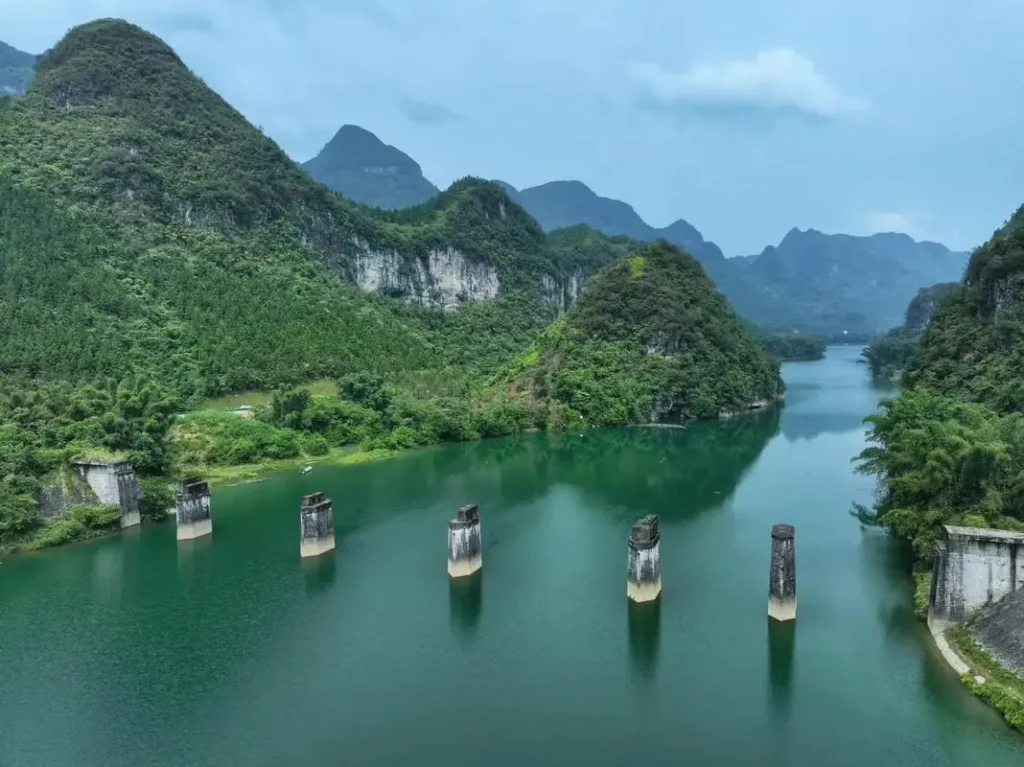
There is a place wild enough! Everywhere you look, there are cooling and refreshing “jelly-like water” and “sapphires.” It is known as the “Semporna of China,” where picturesque caves provide a retreat from both the world and the heat. You can even go boating on the “river that blooms flowers,” as if stepping into a Monet painting.
This place is Hechi, Guangxi, known as the “Hydroelectric Hometown of China” and the “World Longevity Hometown.” It is also a rare ecological kingdom that combines stunning natural landscapes and beautiful scenery, making it an excellent spot for avoiding the heat and enjoying the water.
Guangxi is a typical karst landform, which has created the renowned “Guilin landscape is the best under heaven.” However, “little Guilins” can be found throughout Guangxi, sometimes even surpassing Guilin itself. The karst-formed landscapes include not only towering peak forests and stone forests but also hidden sinkholes, caves, and underground rivers. When underground rivers surface, they form stunning “skylight” landscapes, unexpectedly creating natural cooling spots.
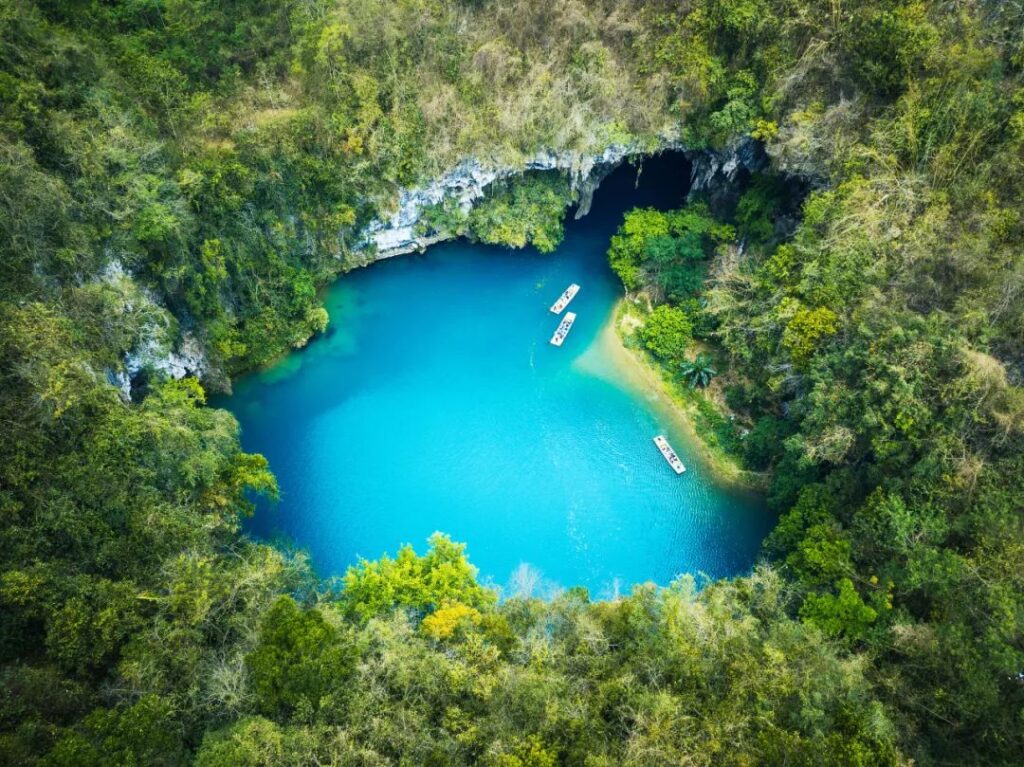
The Sanmenhai Scenic Area in Fengshan County, Hechi, has been praised as China’s version of the “Blue Grotto of Capri Island” and Guangxi’s “Semporna.” It is also the source of the Panyang River in Bama, the hometown of longevity. Looking down, it resembles a hidden sapphire embedded in the green satin of natural textures.
The “three doors” of Sanmenhai come from the three developed karst skylights here. Visitors can enter by boat through natural passages, and the translucent parts on the top of the cave are called karst skylights, connecting the surface with the dark underground rivers. In fact, the Sanmenhai skylights also fit the characteristics of sinkholes, except that the bottom of the pit is occupied by underground river water. All the features of karst landforms, such as underground rivers, large cave groups, sinkhole groups, skylight groups, and natural bridges, converge in the scenic area where Sanmenhai is located, making it a veritable karst world geopark.

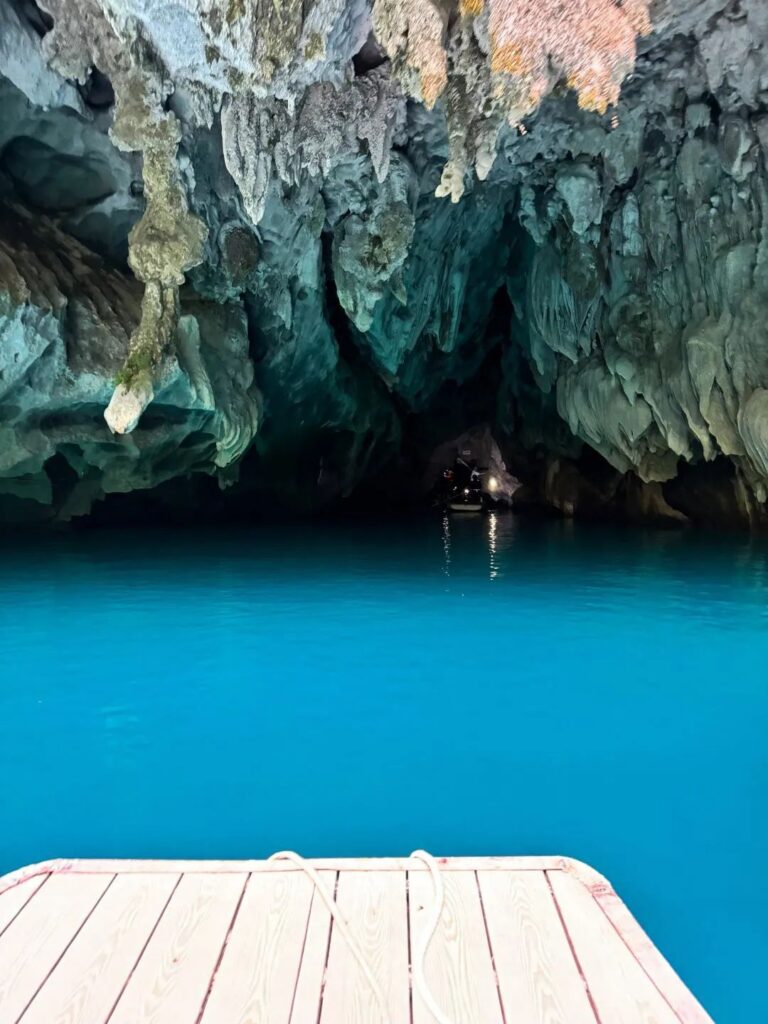

On a clear day, the water here seems to be a combination of pure seawater and Jiuzhaigou, with tranquil blue water and a cool atmosphere that instantly calms the heated heart. Sitting in a boat and entering the cave, the water surface reflects the natural blue light onto the cave walls, adding natural colors to the stalactites of various shapes. There are no decorative lights inside the cave, relying only on natural light, which adds a unique charm.
When the boat drifts to the skylight opening and you look up at the blue sky, you can understand why many people describe this place as “a sea in the mountains, a door above the sea, and a sky outside the cave.” The blue water here even presents different shades of blue in different areas, as if it were glowing, like a color palette.
Tips: In addition to taking a boat for an in-depth tour, you can also climb to the top along the trail to overlook Sanmenhai; avoid the rainy season, or the water will be very turbid.
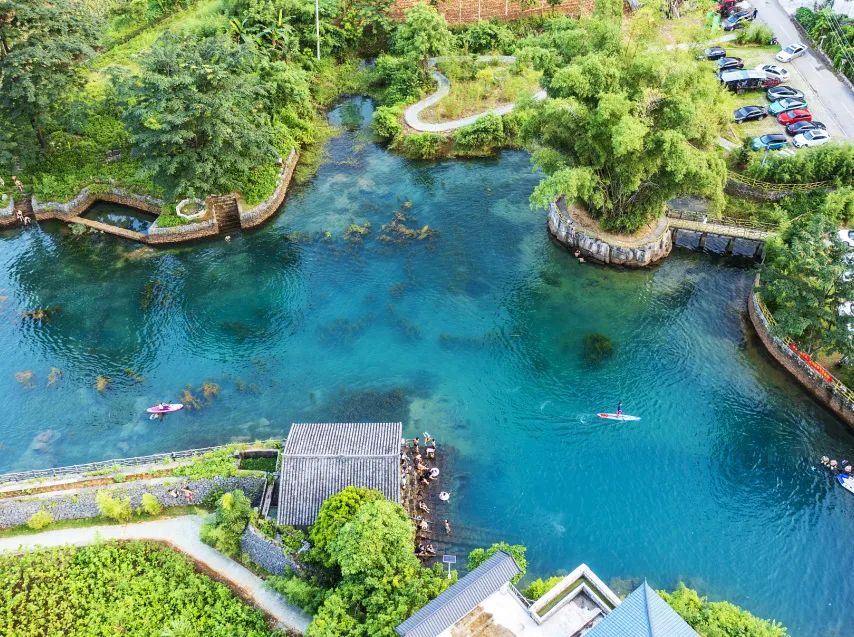
In Du’an County, Hechi, there are hundreds of skylights, known as the “eyes of the earth,” of which about 200 are highly scenic. The hidden underground rivers in Du’an reveal a corner here and there. Some seemingly ordinary clear water areas actually have countless bizarre caves and creatures at the bottom. Initially, these places were retreats for locals to escape the heat. After discovering their wonders, many people trekked over mountains and ridges to explore them.
The Tunbang Skylight is an inclined-well-type skylight belonging to the Disu Underground River, but it is exposed on the surface. Even during the hottest times, the average water temperature here is only 20°C. Many tourists come here to avoid the heat and enjoy the scenery. The water here is clean and clear, with a texture like “jelly,” and it is also called the “Maldives in the mountains.”
As soon as summer arrives, the scorching sun further highlights the coolness here, making people want to jump into the water immediately. Everyone is enjoying swimming, boating, paddle boarding, and diving, spending a refreshing summer day in various ways of playing in the water. No matter how hot the day is, you will feel chilled to the bone as soon as you jump into the water.
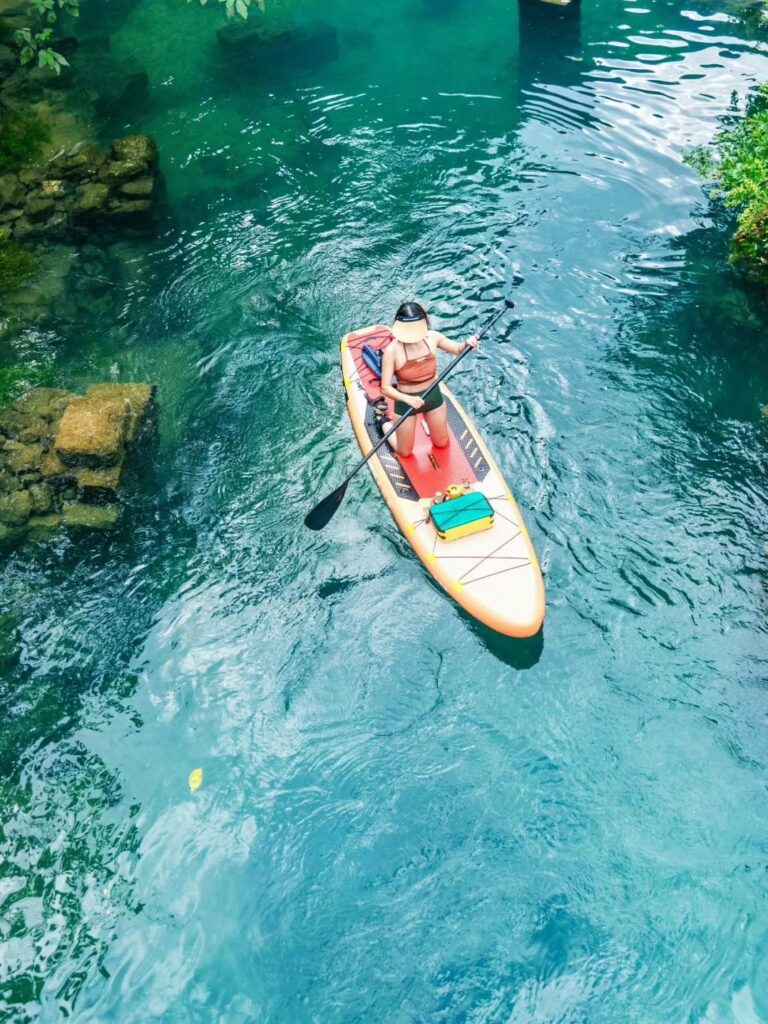
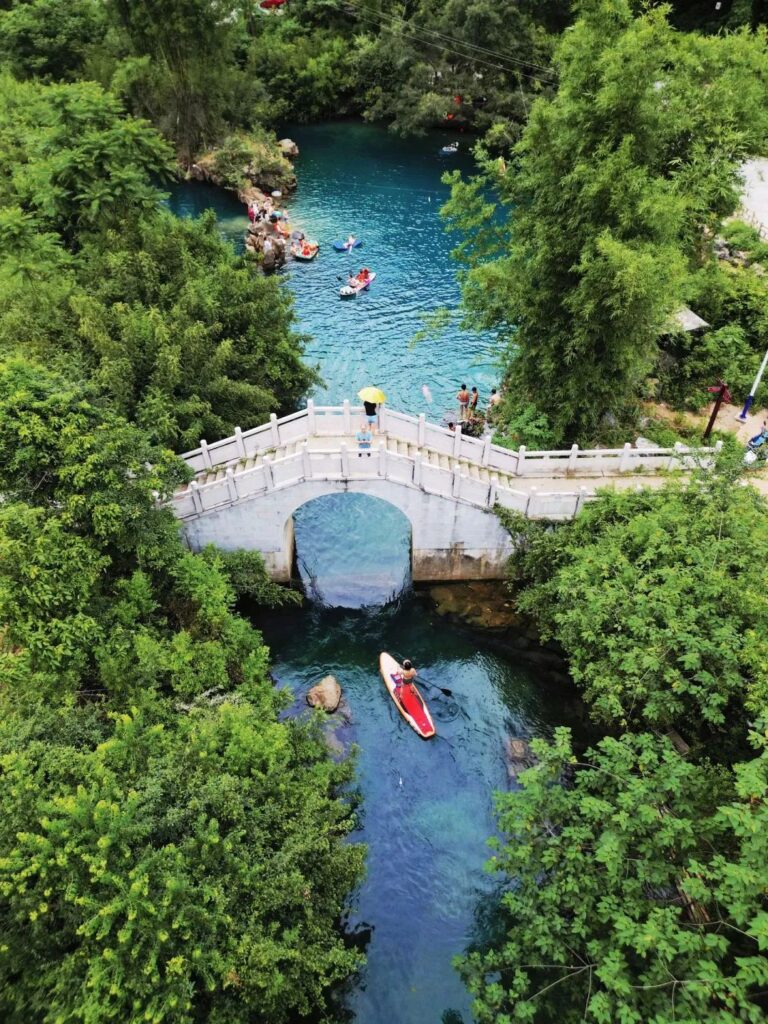
In addition to the two most famous skylights, the Jiuling Skylight has also become popular, with scenery similar to the Libo Little Seven Holes and Jiuzhaigou. It is an understatement to call it a substitute for the Jiudun Skylight. Experienced players prefer to explore interesting skylights, such as the Taohua Jellyfish Skylight Group, known for its peach blossom jellyfish, which is called the “panda of the water.”
Tips: When walking in the mountains of Du’an, you will occasionally discover “jelly-like water” of various sizes, but always play with safety measures and accompanied by someone. Many skylights have unknown dangers deep within, so never underestimate the risks that exist in nature.


May to October is the high-water season, when groundwater continuously gushes out, filling the skylights to the brim and providing abundant water resources to Du’an’s mother river, the Chengjiang. The high-water season also coincides with the blooming period of sea vegetables, with patches of them floating on the water surface, turning the Chengjiang into a “river that blooms flowers.”
The best spot for viewing the flowers is at the Xiangshui Pass Scenic Area, located at the end of the Chengjiang River. Drifting on a boat here, surrounded by flowers in the water and scenery on the shore, feels like stepping into a Monet painting, finding refreshing romance amidst the heat.
For children growing up in Guangxi, memories of scorching summers are filled with playing in the water to their hearts’ content! Escaping from the sun’s scorching heat and drenching sweat, they immerse themselves in the coolness. They play by rivers and lakes, frolic in streams and small pools, like free little fish swimming around. As the sun sets, feeling their rumbling stomachs, they walk home in the gorgeous, colorful sunset, satisfied with their day.
Apart from abundant water resources, Guangxi has no shortage of sinkholes and karst caves, which are not only highly scenic but also excellent places to escape the heat.
Guangxi is known as the “Kingdom of Sinkholes,” with most of the world’s discovered sinkholes located here. One of the largest sinkhole groups in China is found in Hechi. Guangxi’s carbonate rock geology and humid, hot climate provide the perfect conditions for the formation of sinkholes, which are often hidden deep in the mountains, preserving a large number of precious animal and plant species.

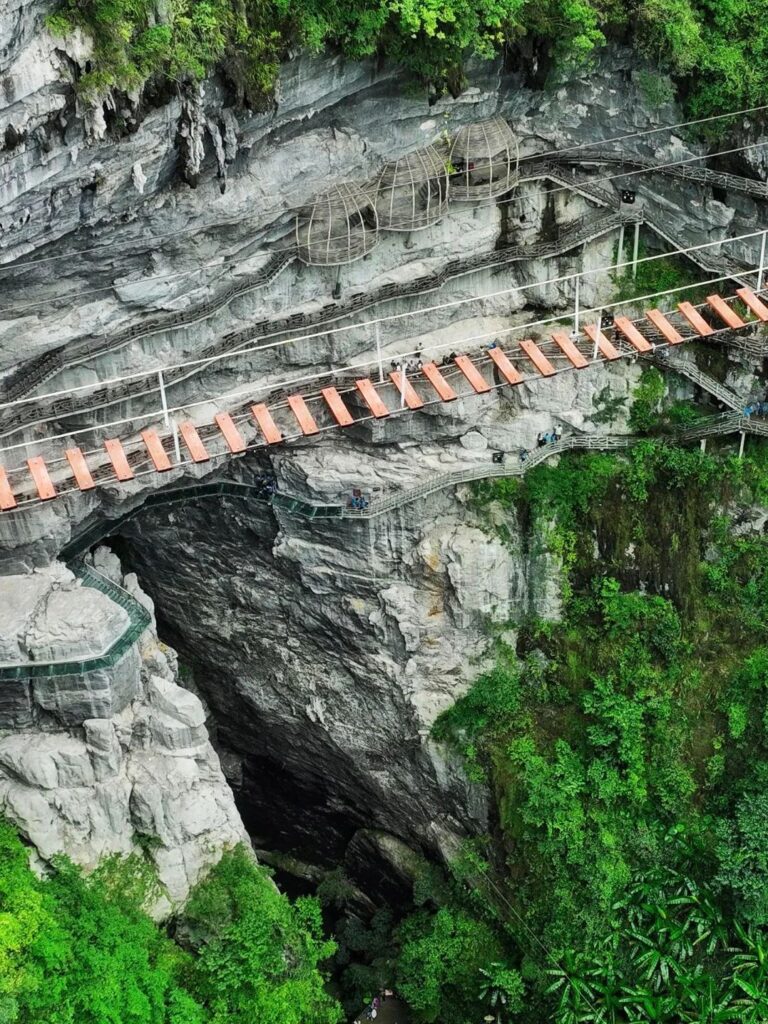
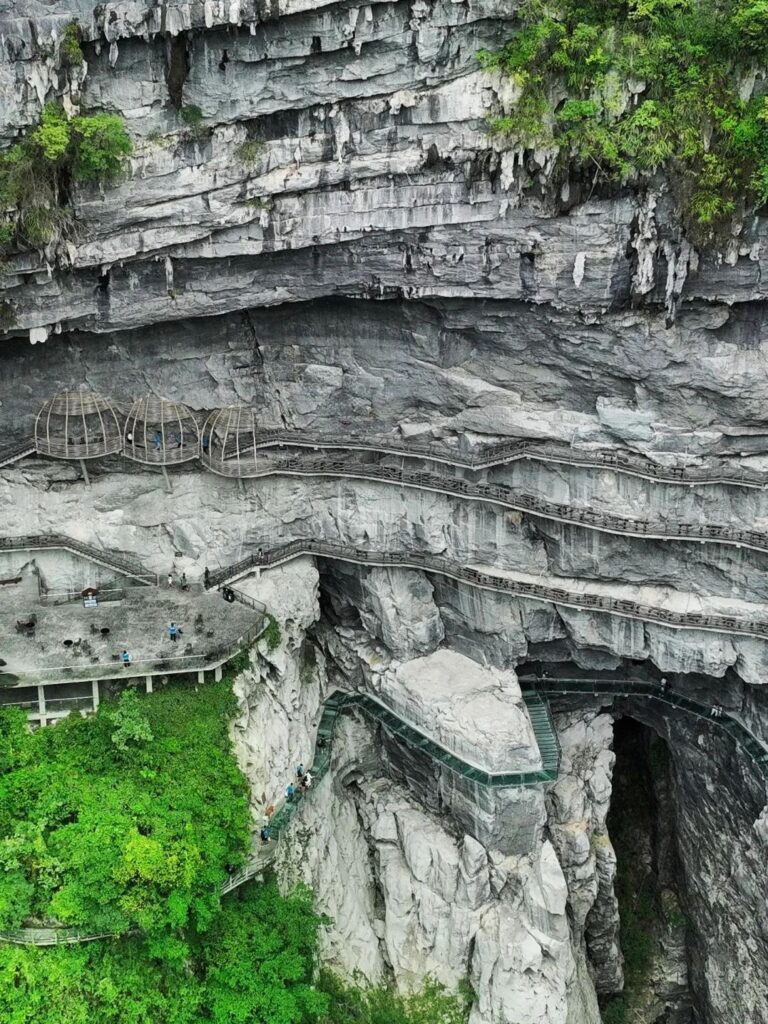
The Luocheng Cotton Sinkhole is one of the better-developed sinkholes. It is about 326 meters deep and 305 meters wide, resembling a large funnel, combining danger, wonder, steepness, grandeur, beauty, and elegance. Looking down from above, it feels as if you can sense the gravitational pull of the Earth’s core.
Slowly exploring the Cotton Sinkhole along the walkways, delving into the secret realm among the strangely shaped rocks and ancient vegetation, you receive natural messages from millions of years ago. If walking on the walkways is not thrilling enough, there are glass walkways, hollow sky ladders, and high-speed ziplines to experience the “danger” of the sinkhole from multiple angles. There are even cliffside infinity pools, cliff rafting, coffee shops, and hotels, allowing tourists to fully indulge in the sinkhole experience.
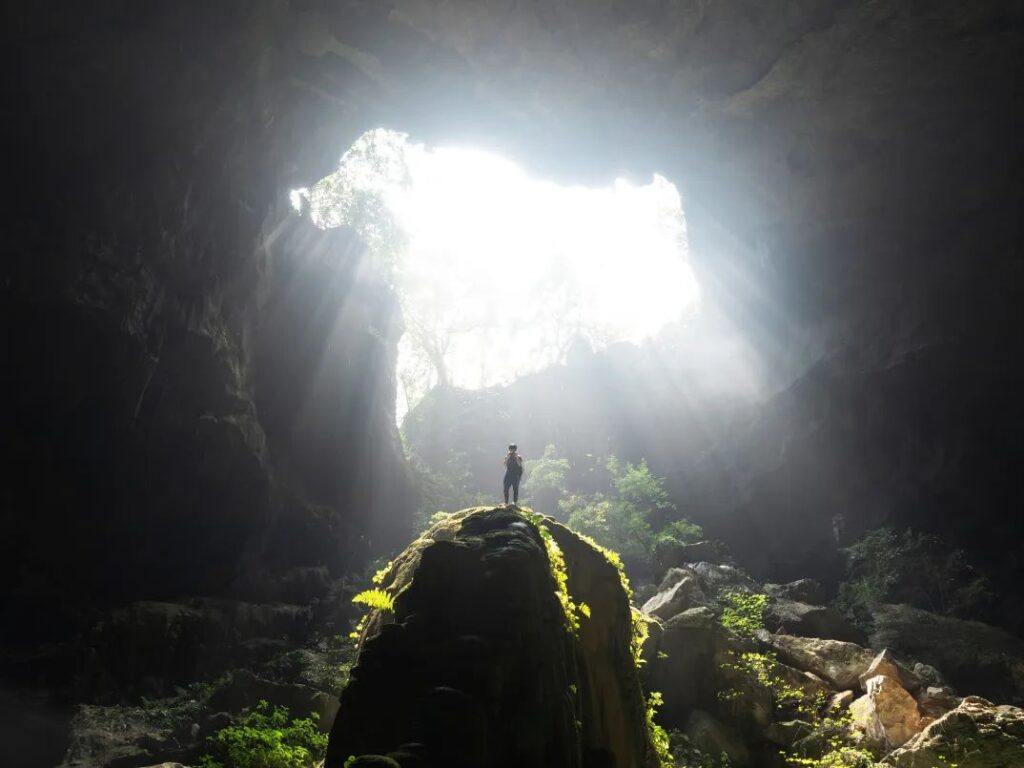
There is a sinkhole that was once unknown but quickly gained fame in the photography community due to a “sacred” moment during the day – the Nonxiang Sinkhole. The original cave has lush vegetation inside, like a vibrant, hidden little forest.
Of course, the highlight is between 2 pm and 5 pm when the sunlight aligns with the cave opening at just the right angle, creating the “Tyndall effect,” bringing a sacred and distant atmosphere, as if finding the dwelling place of secluded elves.
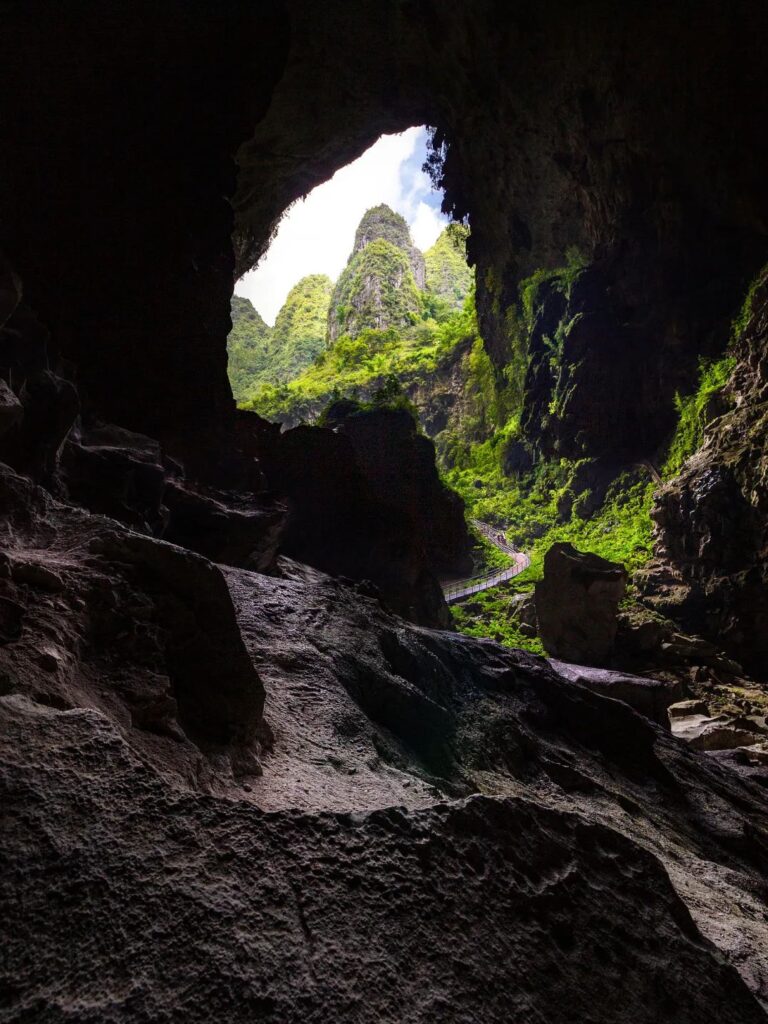
While Guangxi’s known sinkholes can still be counted, the number of karst caves is truly countless. The most famous is undoubtedly the Baimo Cave in Bama, the hometown of longevity, not because it is the most beautiful, but because there are many stories with a slight “mythical” quality circulating here. Many people come here not only to cool off but more so for health preservation.
Negative ions, geomagnetic fields, and weakly alkaline water are the three major health preservation factors that are its signature features. Coupled with the varied shapes of stalactites and stalagmites, it truly allows you to experience the essence of the name “Baimo Cave.”

Located in Nandan County, Dongtian Shengjing is an underground dark river canyon cave with a total length of about 3.5 kilometers. The cave is warm in winter and cool in summer, with a constant temperature of around 16°C. Compared to most caves, it feels exceptionally spacious. The sound of the dark river echoes inside the cave, and the deeper you go, the more it feels like you are approaching the Earth’s core. The bottomless dark river, steep canyons, and waterfalls feel like an adventure in a dream.
Tips: In karst landforms, caves, sinkholes, and underground rivers often appear simultaneously, sometimes creating a paradise on Earth, and sometimes creating danger. Always pay attention to safety to enjoy the wonders and comfort at the same time.
When tired from playing, one craves delicious food. Fortunately, Hechi is a food paradise. Although not well-known nationwide, it has always had a place in Guangxi. Due to its location in the northwest of Guangxi, close to Guizhou, Hechi also has a habit of eating spicy food, combining spicy and sour flavors, very similar to Liuzhou.
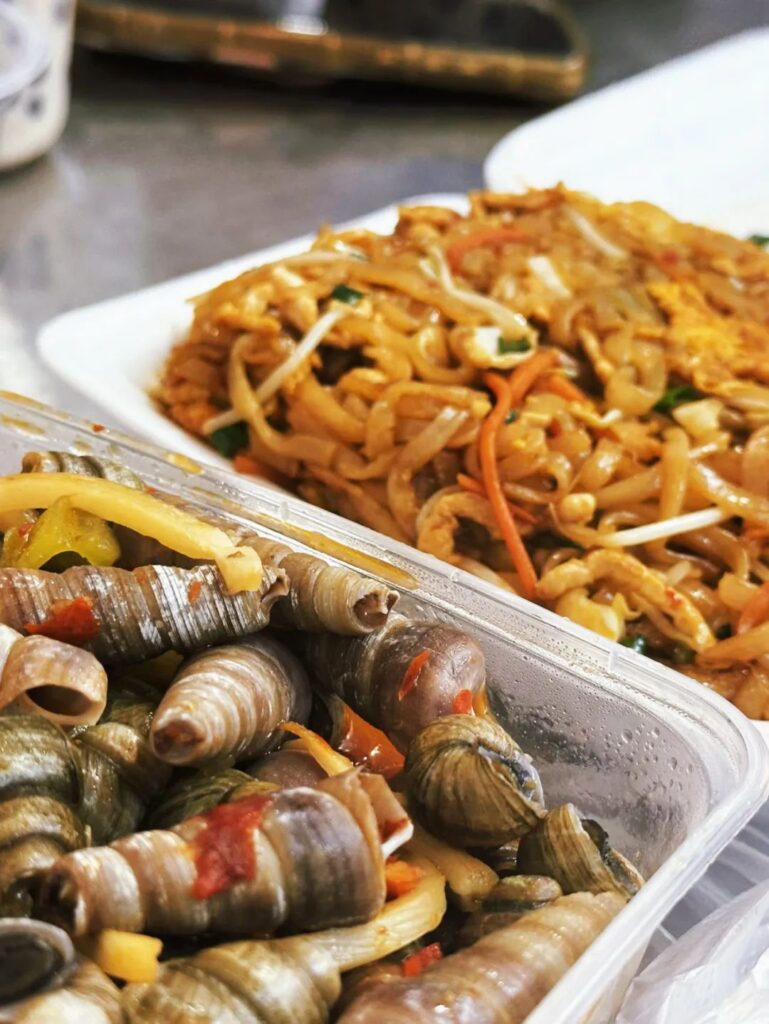
People in Guangxi love slurping noodles, and each place has its own specialty rice noodles. In Hechi, there are savory and delicious sliced meat noodle soup, refreshing cold noodles suitable for summer, and with plenty of toppings, every mouthful is highly satisfying.
Luocheng filtered noodles and Du’an pressed noodles are especially unique to the local area. Both are made on the spot, with a refreshing and smooth texture. The rice slurry for Du’an pressed noodles is fermented, giving it a subtle difference in flavor.
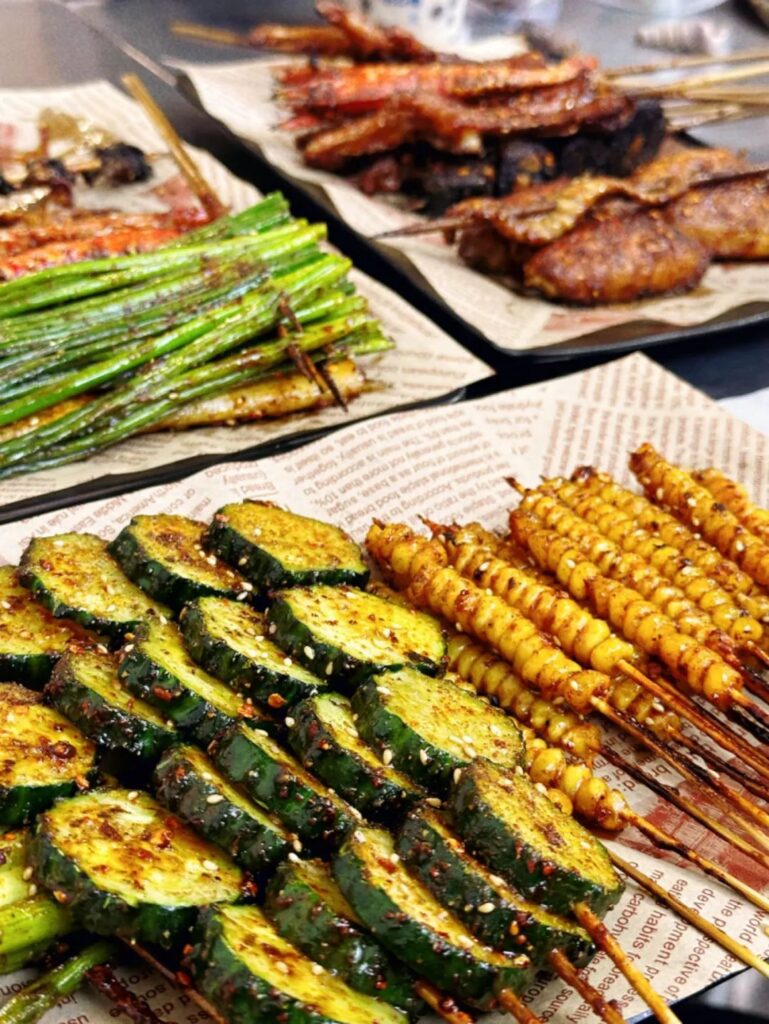

Jam barbecue is a big signature dish in Hechi. Brushed with sweet and sour jam, then sprinkled with white sesame seeds and chili, this wet grilling method makes the barbecue full of meat juices. However, for most northern tourists, jam barbecue may be a big challenge for their taste buds.
Nandan’s barbecue is also unmatched, with a flavor closer to the dry spiciness of Guizhou. “Everything can be grilled” is the specialty of Nandan barbecue, with both familiar and unfamiliar items appearing on the menu.
With its well-developed water system, grilled fish is also a must in Hechi. Yizhou grilled fish is as well-known in Guangxi as Shaxian snacks. Bama fragrant pork is not only well-known but also considered a top-notch main dish in the eyes of Guangxi people.
Yizhou’s cold dishes in Hechi are also unmatched. Crisp and delicious, they are the appetite-stimulating magic weapon of summer, with up to thirty varieties to choose from. Perhaps only “Chinese-style salad” can be this satisfying.
This year, many niche tourism destinations have seen rapid growth, with Hechi also on the list. More people have discovered that Hechi’s mountains and waters are no less impressive than Guilin!
Related Articles:





